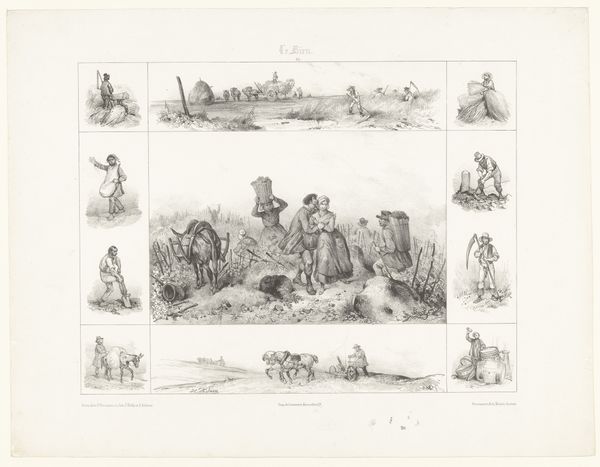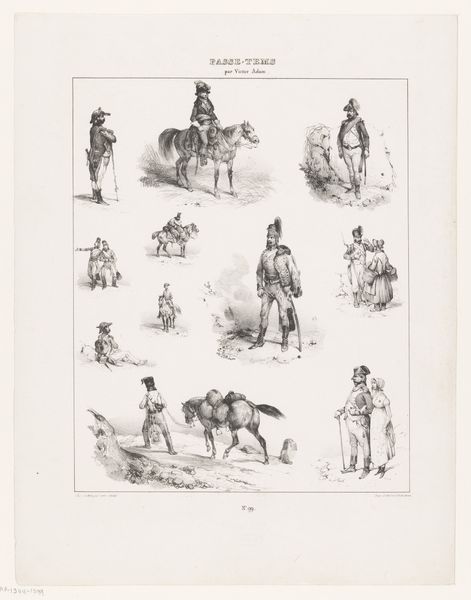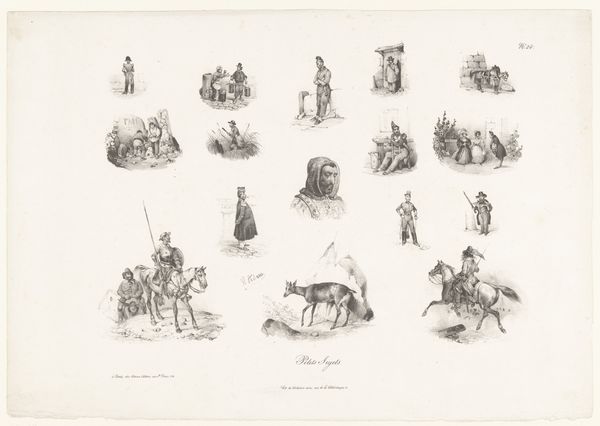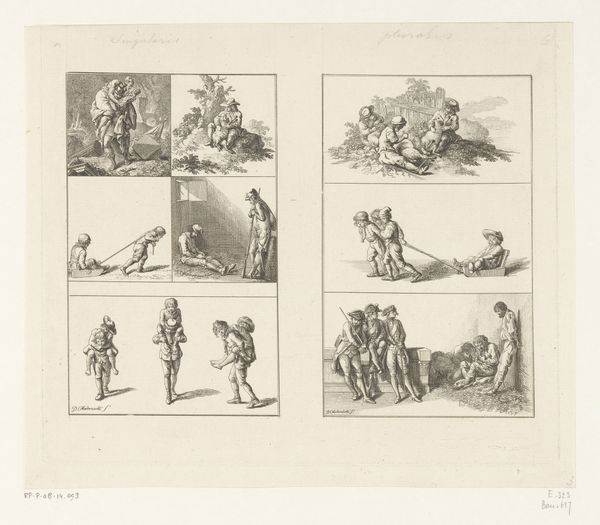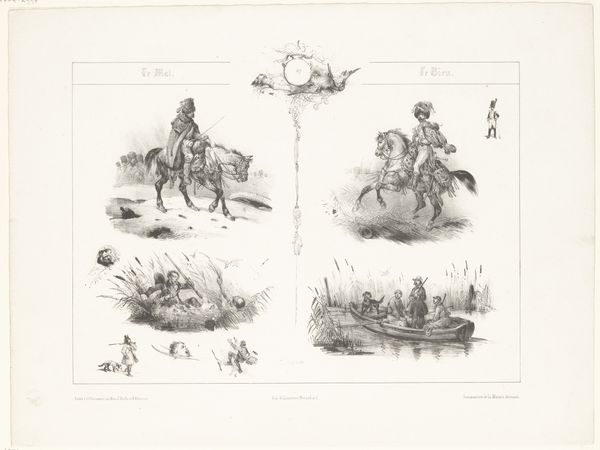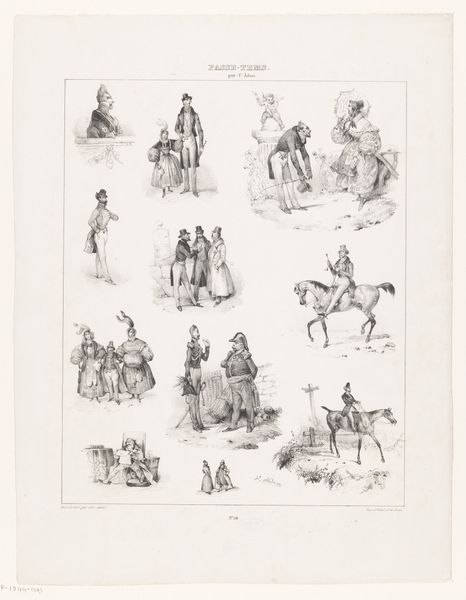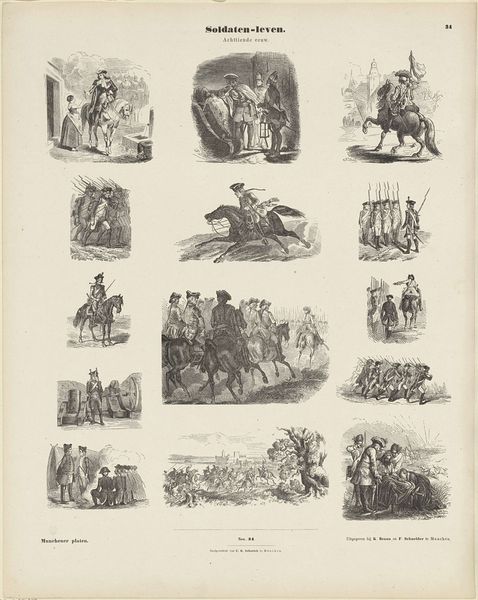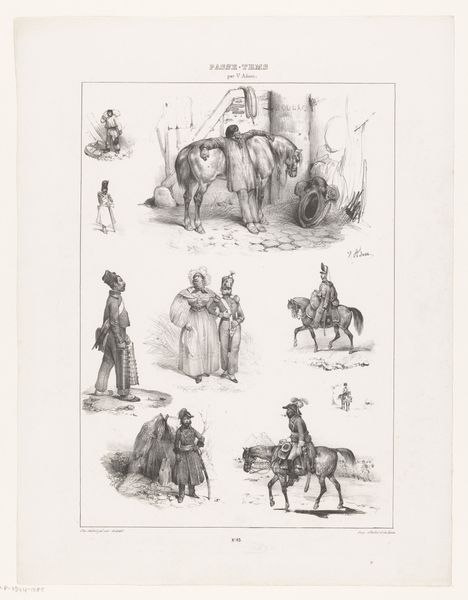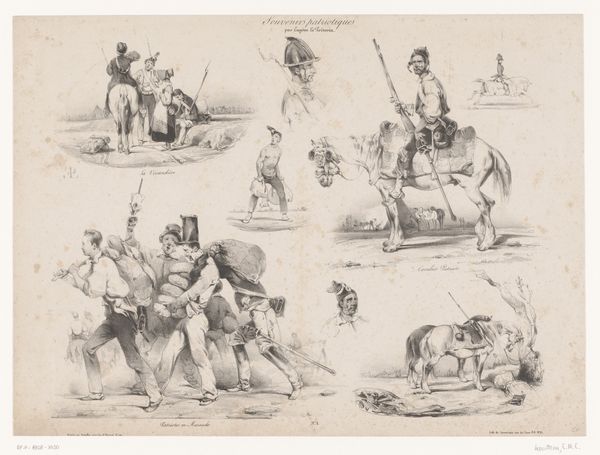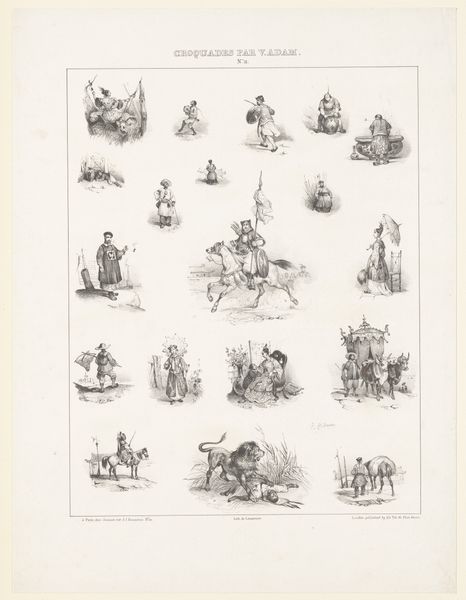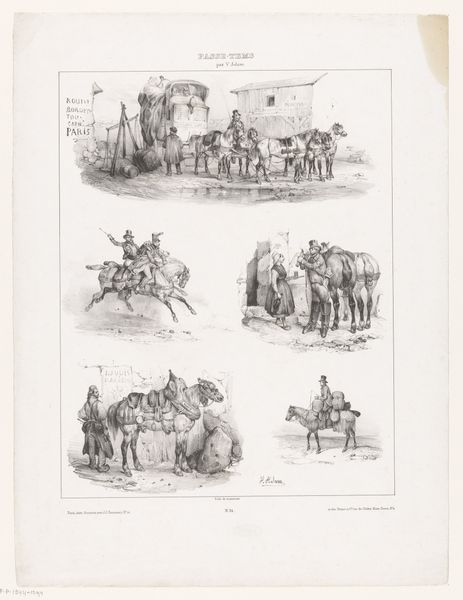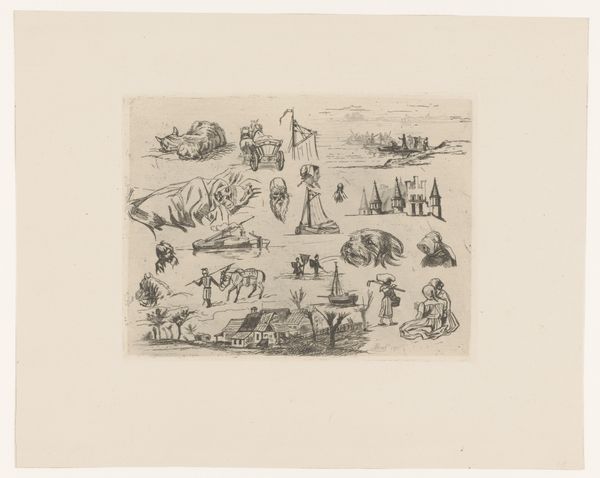
drawing, print, ink, engraving
#
drawing
# print
#
figuration
#
ink
#
romanticism
#
genre-painting
#
history-painting
#
engraving
Dimensions: height 354 mm, width 280 mm
Copyright: Rijks Museum: Open Domain
Editor: This is "Tien voorstellingen van menselijk tijdverdrijf," or "Ten Representations of Human Pastimes," an 1837 engraving by Victor Adam. It's mostly scenes of military figures, but the wide range of depictions almost feels like a commentary. What do you see in this print? Curator: As a materialist, I'm particularly interested in the process by which this image was produced. Consider the labor involved in creating an engraving like this in 1837. An artisan meticulously carved these scenes into a metal plate, inverting the images. Think about the intended consumption. Were these images designed for mass distribution, informing ideas about leisure and social class? How do the depictions of the military connect to the consumption or the construction of power? Editor: That’s a good point – I hadn’t really considered the context of printmaking at the time. Does the choice of engraving as a medium suggest something about how Adam viewed his role, not quite a painter, yet creating a representational artwork? Curator: Precisely! This isn't a unique, singular piece of fine art like an oil painting, is it? It’s reproducible. The choice of engraving situates it within a framework of accessibility and potential for broader influence. Also, consider how these seemingly disconnected scenes challenge traditional hierarchy; in print, everyday leisure can take its place on the same sheet as militaristic posturing. What relationship does this piece then have with Romanticism, in contrast to the labour that generated it? Editor: I see, it blurs the line between craft and high art. That helps reframe my understanding of the scenes depicted. Curator: Absolutely! Focusing on production and reception really unlocks fresh ways of understanding this artwork and the culture that created it. Editor: It really does. I'll definitely think differently about the work involved in creating art of this era, and consider its wider social circulation, not only aesthetic value.
Comments
No comments
Be the first to comment and join the conversation on the ultimate creative platform.
